This is a long review, so I’m going to start by giving a couple groups of readers the conclusion up front so they can hear what they want to hear.
Conclusion for D800 Owners and Nikon Enthusiasts
You smart cookie! You should pat yourself on the back for being such a genius because the D800 has got 36.3 megapixels at your disposal so your Flickr and Facebook pictures are going to rock!
Hasselblad’s, Mamiya’s and Leica’s are for suckers because the cost several times more, have about the same or less megapixels, and lower DxOMark Sensor Ratings! In fact, you should get a tattoo on your ass with that #1 DxOMark sensor rating to show the world just how awesome your camera is! It’s the best, period – end of story – no need to read on!
Canon versus Nikon? No competition – the D800 is cheaper and has more megapixels – end of story!
Of course, you are probably the type of customer who can’t settle for second best so enjoy your D800 now because we all know that the D800E is what you should really own. Click here to pre-order your D800E now so you aren’t stuck with the second best camera later this year. After all the D800 will make a good second body right?
Oh, and if you don’t have a D800 yet you better get one so you don’t get left behind! Click here to order now!
Conclusion for Canon 5D Mark III Owners and Enthusiasts
We all know it’s all about the ISO, and the guys at DxOMark are smoking crack. Anybody with eyes can clearly see that the D800 has about the same ISO performance as a 30D!
The D800 is totally useless after 3200 ISO, whereas the 5D Mark III is completely usable up to 25,600! It gets even better when you pair it with the Canon 70-200mm f/2.8L IS II USM lens.
The Canon 70-200mm f/2.8L IS II USM lens blows away the Nikkor 70-200mm f/2.8G ED VR II. The Canon has better stabilization, a much sharper image, and is even a full stop faster in real world testing. Heck, even Thom Hogan points out the flaws to its crappy rear focus design in his review.
Even Ken Rockwell, a notorious Nikon fan boy, says on May 6th, 2012:
The 5D Mark III is my overall favorite
If I only could keep one, it's my 5D Mark III. It even feels better in-hand, with a much better thumb grip than the D800. Canon made huge improvements over the 5D Mark II's grip, Nikon didn't.
Fake Chuck Westfall knows it too and even says that the 5D Mark III kicks the pants off the D4!
Like Fake Chuck Westfall says, I'm sorry to hear that the truth insults you Nikon fans but the 5D Mark III is the new king of the DSLR when it comes to real world use.
Click here to order yours now if you are like the last two or three people on Earth who has just come out of a cave to learn that the perfect camera has finally arrived!
Conclusion for those who think DxOMark Sensor Ratings are the word of God
Please refer to the conclusion above for D800 Owners and Nikon Enthusiasts.
Introduction for the open minded
Okay, now that I have your attention, let me explain my sarcasm above.
As a blogger I enjoy the job of testing products from many companies – not just Canon and Nikon. I enjoy this and I especially enjoy when I find a new product that is better than anything I’ve used before. I get excited and share that enthusiasm with you.
Naturally when you review many products, some are going to not meet up to the hype. In those cases, I feel it is my duty to share my honest opinion even when it’s not the popular opinion on DPReview’s forums or some fan boy site.
As a for-profit business (as all blogs and photography web sites are, but few meet the legal obligation to disclose as clearly as I do), you must know that I profit if you buy a Canon, Nikon, Sony, Hasselblad or even a Sakar Monster High Digital Camera. It’s in my best interest to tell you what you want to hear and get you excited to buy products. However, I don’t do that.
When I write my reviews on the G1X, s100 or XPro-1 where I don’t declare them to be the greatest thing since sliced bread it means you probably won’t buy, so it costs me money. However, I believe in being honest in MY PERSONAL OPINION which may differ from yours.
My reward for my honesty for many of you is your trust, and for that I’m thankful. However, for some if I don’t tell them what they want to hear I’m sent flame mail calling me a #@%&ing idiot and worse.
What follows in this article is what I would tell my best friend, brother, or neighbor if they asked me what I thought about the D800 vs the 5D Mark III. I spoke with my wallet and bought a 5D Mark III because I have an investment in Canon lenses, so it made sense for me. If you have an investment in Nikon lenses then the D800 or another Nikon body is probably going to make better sense for you as I don’t encourage people to switch camps once they’ve invested in good lenses.
The D800 – #1 on the DxOMark Sensor Ratings
Before the D800 came out, I was a little suspicious of the DxOMark sensor ratings, but as a computer programmer for over 25 years I figured that the computer knows best so their ratings were probably about right. After all, in 2011 and earlier the Nikon D3s and D7000 were certainly better than any Canon I had owned when using my own eyes, and the DxOMark ratings backed that up. Computers don’t lie, so I was quick to take their word as an ultimate source of fact.
When the D800 images started to surface I looked at every comparison I could find like these:
and I quickly did as any objective person who isn’t wearing rose colored glasses would do – I acknowledged the wow of all the megapixels in the D800 being better than I expected they would be, but I was very disappointed in the noise level of the images. After all, for the last 5 years Nikon was the undisputed king of high ISO noise performance, so it was a given that they would kick Canon’s ass for this round as well. However, to my dismay Nikon had actually taken a step backward to have noise levels that were reminiscent of the early 2000’s!
I tried hard to hold back my judgment until I had a camera in my hands to test as I’ve sometimes discovered that there’s more than meets the eye when you dig deep.
When my 5D Mark III arrived, I was thrilled that I could actually use ISO 25,600 and easily clean the noise up with Noiseware or Dfine (which was optional in some cases). In testing the D800, I found the noise issues highlighted in the comparison images above to be spot on with my findings, so Nikon had obviously sacrificed noise for more megapixels.
When DxOMark rated the 5D Mark III sensor at 2393 ISO (Sports) to 2853 ISO for the D800 I realized that something was seriously wrong with their software. I emphasize software here because I don’t think that DxOMark has done anything sinister or is lying. I do believe that is the results their software gave each product, but as a programmer I know that software does what you tell it to do not what you want it to do. As technology improves sometimes algorithms of the past may fail to adapt to realities of the present and that’s where the human eye comes in.
Even examining RAW images processed with Canon’s DPP 3.11.26 (the most accurate Canon RAW file processor) and Capture NX2 2.3.1 (the most accurate Nikon RAW file processor), I wasn’t able to see with my eyes how in any possible way the D800 was even in the same league as the 5D Mark III in noise handling. I also wasn’t able to see how it exceeded the amazing dynamic range of the Hasselblad’s I’ve had the pleasure of shooting like the H3DII 50 and H4D-60.
In short, I’m going on the record and saying that something is seriously flawed in the testing that DxOMark did and most likely its in their software algorithms. The data doesn’t match up to the real world results that any objective person can see with their eyes. The time has come for them to look hard at their test measurements and have them accurately reflect reality, otherwise I see little use for them.
I’ve used a Phase One IQ180 and they must really be on crack to say that the D800 is even in the same league! Granted, I share the opinion that Hasselblad and Phase One are on crack in their pricing, and I’d never waste my money on cameras with such obscene pricing. However, I’ll give credit where credit is due and say that my own pixel peeping has determined that their new digital backs are certainly in a league above any DSLR made today when it comes to image quality (not noise – they are in fact studio only cameras in my opinion).
With that elephant out on the table, I give you my official review of the D800. As a Canon owner and camera enthusiast I am comparing it to my 5D Mark III simply because I’m curious as to how it differs from my investment.
I’ll say up front that both are fine products and I think owners in each respective camp will find things that they love and some things that disappoint them when comparing the two against each other. However, I’ll try to be as objective as I can and adjust my advice to what I’d tell a friend or family member in either camp.
Using the D800
The Nikon D7000 was one of the most enjoyable cameras I’ve tested. I came so close to buying that camera because of just how enjoyable it was to use. I felt the same way about the usability of the Canon 7D, but it’s image quality sucked compared to the 5D Mark II and 1D Mark IV that I owned. It also was no match for the D7000, so when friends asked me what Nikon to buy I often told them that if they couldn’t afford the D3s (my favorite Nikon), then the D7000 was the way to go.
I even liked the D7000 better than the D700, so when rumors surfaced that the D800 was effectively a full frame D800 with 36+ megapixels I was excited. In my mind I thought, uh oh – Nikon has done it again – they’ve destroyed Canon by leaving them without a real competitor to the D800. As a result, I’ve been super excited to get my hands on this camera and even had a little money tucked away to buy a D800 if it lived up to my dreams of what it could be.
When I got the D800, I was glad to see that it had the wealth of hard buttons on the body that Nikon is famous for. When you are in the field and working fast, the last thing you want to do is fumble through menus so Nikon’s hard huge number physical buttons is a big plus for me. The D7000 was brilliant with its placement of many of them and the D800 didn’t let me down here (although Ken Rockwell seemed to be disappointed).
At first when I used the D800 I was very unimpressed with the extra megapixels because when I’d zoom in on the back of the LCD the image wasn’t very good. I later learned that the LCD on the D800 is poorly matched as it just can’t accurately show you what you’ve captured. To do that you’ve got to get these big files home on a good display (I use a NEC PA Series) and your reward is a great amount of data that allows for pretty aggressive cropping. Here’s a good example, the super moon which wasn’t so super by the time I was done with my family duties to go shoot it:
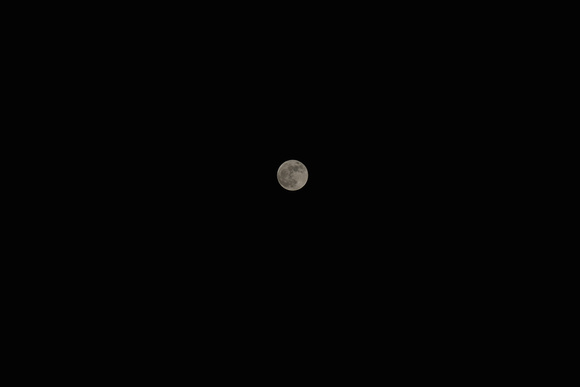
The Super Moon Wasn’t So Super at 9:57 PM on May 6th
However, we have a big fat file so let’s crop to 100% and voilia here’s what came out of the camera (in-camera JPEG crop only – no other adjustments and no pixel resizing):
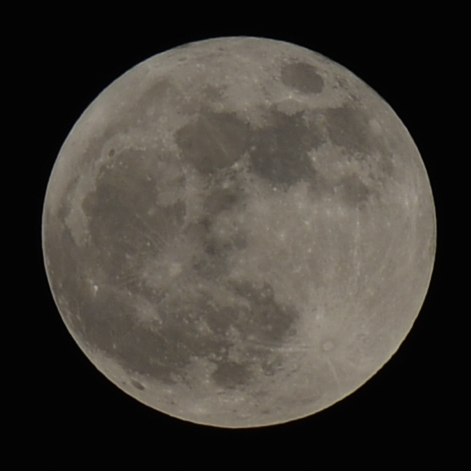
Nikon D800 with Nikkor 70-200mm f/2.8G ED VR II at 200mm
f/5.6 for 1/320 sec @ ISO 100
With RAW processing, there’s lots of detail there to create a cool Moon shot. Score one for the megapixels! Of course, I was very disappointed with the white balance and sharpness of this image but both of those can be fixed in RAW processing.
When I did the same thing with my Canon, here’s what I got (unprocessed in-camera JPEG):

Now this image is actually a little smaller than it should be because I was at 165mm instead of 200mm due to a mistake on my part. The rest of the camera settings are the same as the Nikon and I was able to focus a little better thanks to Live View performance of the 5D Mark III (more on that later).
My mistake aside, it was clear that having more megapixels helped with cropping and pulling out detail, but both cameras performed very well.
In my article entitled, First Look: Nikon D800–Should Canon 5D-Mark III Users Switch?, I was able to get great detail out of people shots in the studio as well. Here’s an example:

Nikon 800 – 1/200 sec at f/11, ISO 100, 200mm, AWB, Handheld
Here’s some screen grabs from 100% of this image:
That level of detail impressed me, but the 5D Mark III stacked up well against them too (click here). What impressed me even more was this flower shot and crop (no Canon to compare against):

Nikon D800 1/200 sec at f/2.8, ISO 280, 200mm, Cloudy White Balance, Handheld
In the rain I captured this shot and shot at when you look at the leaf at 100% (below) you have what would be a pretty darn good macro shot – straight out of the camera JPEG (12.9MB and 71.4MB RAW) with a mega crop:
This was the “wow” shot I was looking for to make me warm up to the the D800.
Speaking of warming up, when playing around with the D800 I took this shot in my kitchen:
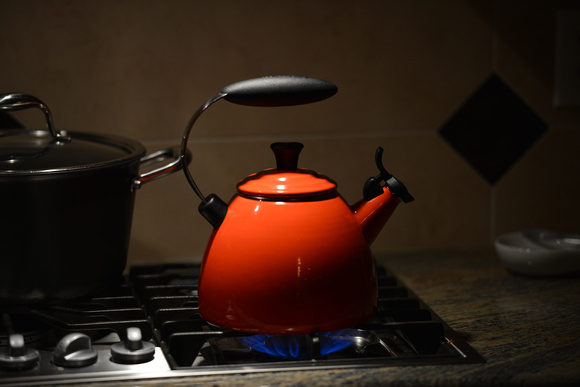
1/125 sec at f/2.8, ISO 3200, 200MM, AWB, Handheld, Spot Metering, AE Lock
What impressed me about this shot was the dynamic range of color and shadow detail. Outdoors on a better day the detail captured in those 36.3 megapixels didn’t disappoint either:
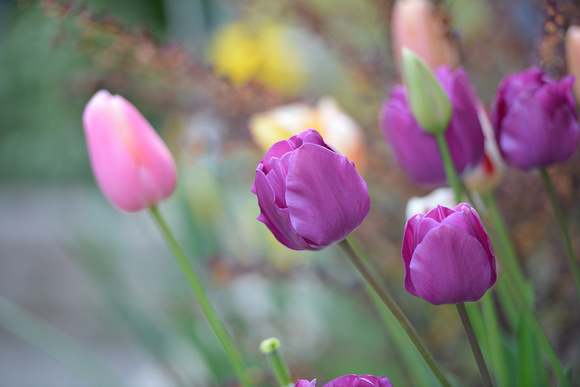
1/125 sec at f/2.8, 200mm, ISO 560, AWB, Handheld
So the conclusion here is if you are a big cropper – for whatever reason, the D800 has some value in your line up for sure. Of course, this is no sports camera so I wouldn’t advise bird shooters to get one simply because you would be hampered by its auto focus performance.
D800 Compared to the 5D Mark III
I was on a very tight schedule for my review, so I didn’t get to pull together as many sample images that I would have hoped to have for you. I did manage to skip out to Kerry Park and fire off some shots of the Space Needle and cityscape with both cameras using the same tripod and identical configurations (technically, not subjectively).
Nikon D800 - 4 sec at f/14, ISO 100, 112mm
After switching cameras on the tripod a few minutes later, I got this with the 5D Mark III:
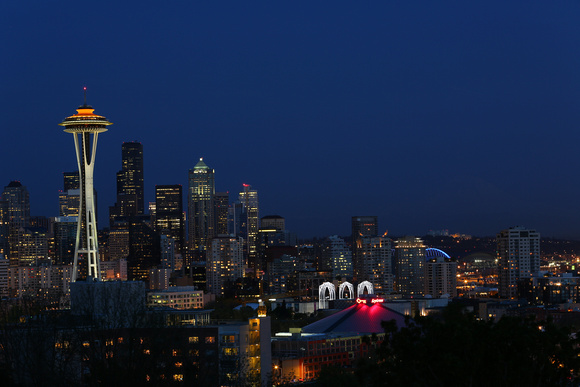
Canon 5D Mark III – 10 sec at f/14, ISO 100, 105mm
When you click on the these two files you get the original in-camera images with no edits. When you compare things like the bolts on the Space Needle, or the people in side of it, or the Avengers sign at the Pacific Science Center (by the white things near Key Arena), etc… you quickly notice that the Canon image is actually sharper despite being a longer exposure.
The Canon won here primarily because the Live View of the D800 creates a ton of noise when you zoom in under low light conditions. The noise is so extreme it rendered Live View useless for focusing, so I had to focus via the viewfinder. Despite my adjustments to the diopter, my test unit sure felt like it suffered from the blurry viewfinder problem as I never got that “HDTV sharp” image through the D800 viewfinder that I get from my Canon cameras. It wasn’t unusable or way off as the article suggests, but it wasn’t as crisp as the Canon (despite diopter adjustments).
UPDATE: Nikon D800 Live View Bug?
To prevent this issue from plaguing me when I was doing testing later in my studio, I used an Eye-Fi SD Card to wirelessly transfer my images to my computer so I could double-check the focus. This wasn’t possible at Kerry Park, so the 5D Mark III won this comparison hands down due to what I’ll call a Live View / Focusing advantage to Canon.
The Bookshelf Test


if you’ve followed my blog for a while you know that I like to take shots of my bookshelf for evaluating cameras. I like this because it allows me to evaluate the performance of text, textures, and shadow detail.
When doing these tests I always shoot RAW and JPEG, but I don’t have a way to upload the RAW so they are just used for my analysis. I mostly focus on the in-camera JPEG because honestly that’s the camera manufacturer's attempt at giving you what they think is a print worthy image from their RAW file.
I use most camera default settings, except I make sure that the best files are created (JPEG Fine and Uncompressed RAW). I know that with RAW file processing different results are possible that some will argue are better, but the in-camera JPEG takes human error and bias out of the equation in my opinion. With that said, what follows are a few select comparison images from both cameras, but you can get the full set including the original in-camera JPEG’s here:
For the record, after focus was acquired I turned everything off on both lenses. This means no AF, VR/IS, etc… and I always verified the images during capture using an Eye-Fi transmitted image to my 24” display. 30 second timers were used on both cameras to ensure there was no chance of camera shake. Exposure was set manually to what was indicated as the correct exposure using Matrix metering on the Nikon and Evaluate on the Canon.
The focal length and aperture chosen were determined by looking at the blur index for the Nikon and Canon lenses at http://www.slrgear.com where I determined both performed equally well at f/8 at approximately 100mm.
Click the following files to view their originals:
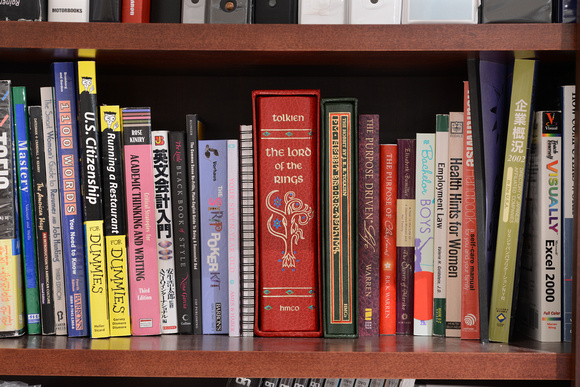
D800 f/8 @ 100mm, 15s, ISO 100, Mirror Lockup, AWB

5D Mark III @ 100mm, 10s, ISO 100, Mirror Lockup, AWB
Identical settings between the cameras are not possible for two reasons:
- The Nikkor 70-200mm f/2.8G ED VR II is a rear-focusing lens so it behaves differently than the Canon 70-200mm f/2.8L IS II USM despite being on a tripod and full-frame camera. Thom Hogan describes issues surrounding rear focusing lenses well in his review, so despite the tripod and camera not moving the view of 100mm from both systems was not identical. To get roughly the same data captured I had to adjust the Canon lens to 85mm as shown below.
- Despite both lenses being an f/2.8 lens, the Canon is a brighter lens that allows you to use faster shutter speeds. If this is a combo you use often, this is something you might want to factor into your decision if you are considering switching camps.
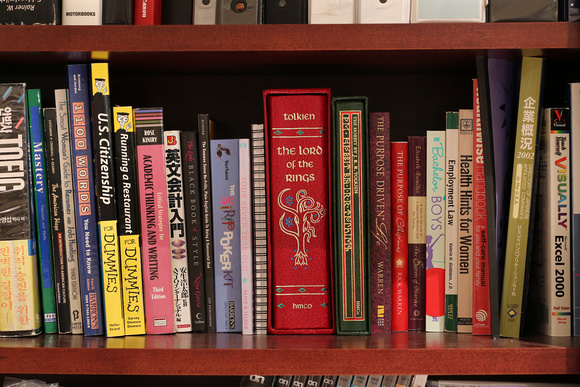
5D Mark III @ 85mm, 10s, ISO 100, Mirror Lockup, AWB
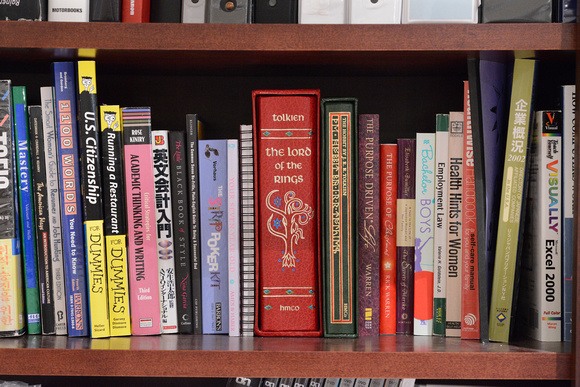
D800 @ 100mm, 1/4 sec, ISO 6400, Mirror Lockup, AWB
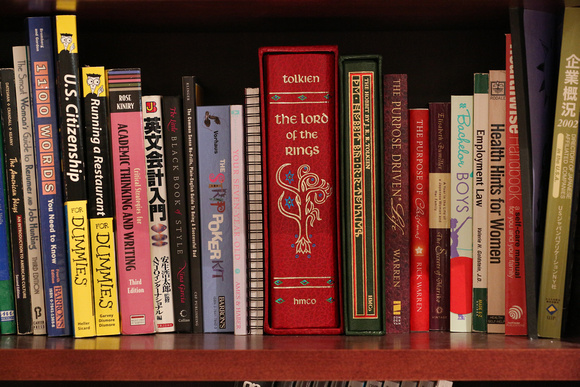
5D Mark III, f/8 @ 100m, 1/6 sec, ISO 6400, Mirror Lockup, AWB
At ISO 6400 the D800 starts to show its noise disadvantage very well, but there’s still good detail in the image so it would clean up well with noise reduction software like Dfine.
Ignoring high and low modes on both cameras, the 5D Mark III can go to ISO 25,600 and still provide a usable image. This is where the wedding, event, and concert photographers are going to find the 5D Mark III a much better choice for their indoor work.

5D Mark III, f/8 @ 100m, 1/125 sec, ISO 25,600, Mirror Lockup, AWB
Recovering Shadow Detail
One of my friends and former guest bloggers asked me to do an analysis of what I could recover from the shadows using the native raw processor of both Cameras. What follows is a copy and paste of my informal email in a conversational tone…
I used Capture NX2 2.3.1 for the NEF files and DPP 3.11.26 for the CR2 files.
I used the same RAW files used by the cameras to build their in-camera JPEG’s discussed above and I avoided Lightroom to remove any concerns about 4.1 RC2 not being shipping software. I also point out that Canon doesn’t share its file format, so Adobe simply reverse engineers (hacks) the files to give them an approximation of how they should be rendered. As a result, I always trust DPP better when RAW processing for critical work (commercial jobs), and Lightroom for casual work (i.e., family photos).
Ignore the colors because I wasn’t trying to get a good photo – I was just seeing what type of detail I could pull out of the shadows from the RAW file:
D800 @ ISO 100 NX2.3.1 Shadow Protect +100:
5DM3 @ ISO 100 DPP 3.11.26 with Brightness +2.00 & Shadow 5:
This tells me at 100 ISO with layers masks, some effort, and a good raw file processor you can get at least the same amount of shadow detail recovered from both. To my eyes it seems the D800 has good dynamic range for sure, but the 5DM3 can pull more detail out of the shadows. The D800 is cleaner though which has always been Nikon’s advantage over Canon (and Canon has the advantage pulling details out of over exposed photos).
The garish colors on the Canon can easily be contained, but I didn’t tinker with it too much. Here’s just a quick example doing a Color Saturation -4 and Color tone 2 on the 5DM3 file above:
This brings a lot of detail lost by oversaturation above.
At ISO 800 on the Canon you get this:
Brightness +2, Contrast -4, Color Tone 2, Color Sat – 4
And on the Nikon D800 @ ISO 800 you get this:
Shadow Protect +100
It looked like the Canon noise reduction was pretty bad so I dropped it to zero (and chrominance NR to 6):
That brought some detail back but the Nikon D800 looks better here to me.
I tinkered with the Canon but it seems you’d need to have better NR to get a result that beat the Nikon. NX2 wins at this ISO for sure.
Here’s the D800 at ISO 3200:
And the Canon at 3200:
Here it seemed the Capture NX2 noise reduction was getting in the way, so like the Canon it would do better with external noise reduction processing. However, the Canon image overall seemed sharper (mostly due to the lens advantage) and more salvageable.
My net take here is that it’s too close to call – both seem to do a good job of recovering detail from the shadows in their native RAW processors. If you are determined and patient, perfect results could be achieved with either using external noise reduction software and layer masking.
And the Winner Is…
You, the camera shopper. These are both great cameras with different customers in mind.
I consider the D800 to be the ideal camera for the studio photographer or daylight landscape photographer who can afford to live at ISO 100 and let the camera sensor gather perfect light. This is where I find the extra pixels are handy. When you aren’t needing those extra pixels it’s very handy that you can use the D800 in DX mode to have what amounts to an improved D7000.
I find the 5D Mark III to be the perfect camera for the wedding, event, concert photographer as well as the general hobby shooter, parents and videographers. It’s wealth of features that matter when shooting, and its higher ISO performance make it an invaluable tool for real world usage. In this sense, I agree with Ken Rockwell’s take (gasp, did I just say that?).
What about Video?
The 5D Mark II changed the video industry and the 5D Mark III seems to have addressed filmmakers concerns. The D800 on the other hand seems to have done an admirable job from what I’ve read, but I’m not a videographer so I’m going to leave video analysis as an exercise to the reader.
Should I switch camps?
Probably not.
My default advice to those considering switching from Canon to Nikon (or vice versa) is that once you have any camera your priority should be to get the best lenses (see Which Lens Should I Buy?) before you replace your camera body. Both Canon and Nikon have their strengths and weaknesses so switching platforms will rarely make economic sense. The learning curve from switching Camera platforms can be a big hassle as well for some.
Related Articles
- First Look: Nikon D800–Should Canon 5D-Mark III Users Switch?
- Nikon D600 Review
- Canon 6D Review
- Parents Rejoice – No More Dark, Blurry and Out of Focus Pictures! (Canon 5D Mark III Real World Shots)
- Canon 5D Mark III Real World Shots–In-Camera HDR, High ISO, Flowers, Nature, People & Cars
- Canon 5D Mark III First Thoughts–WOW, Canon is BACK!!!! (REAL WORLD SHOTS)
- HANDS ON: Canon EOS-1D X (sample images and video)
Disclosure
I was not paid in any way to do this article. I did it as a public service because like you I am interested in how these cameras compare. I was provided with a D800 and lens on loan from one of my blog partners for a week, but it will be shipped off soon. I also purchased my Canon 5D Mark III with my own money – same price as you – from Adorama.
If you make a purchase using the links found in this article, I may make a commission. Thanks for supporting this blog by coming back here and using my links when you are ready to purchase. Contact me if you need a link or use the donate link if you enjoyed the article but want to shop local (or outside the US).













12 comments:
Thanks for your honest comparisons as a user. I'm in the Canon camp and all prepared to learn what I have to in order to eek out what I need to get from my new 5D3 (i.e., refrain from using Adobe for RAW conversions for now), and avoid thinking what the Nikon D800E might be able to do for me.
Having seen a number of comparisons and pro/con threads, what is your opinion about the following:
1. Downsampling noisy D800 images results in noise removal and greater detail than a 5D3 at the same ISO and light levels?
2. D800 has much better low noise characteristics at ISO 100 than the 5D3?
3.D800 noise is very easy to clean up in post processing, and you retain the higher detail levels?
My impression from what I've read so far is that the advantages of D800's greater number of megapixels greatly out weighs the disadvantages, especially when you post process. For that to be true, the Nikon would win if the post processing time was no greater in length or difficulty than processing 5D3 images. What do you think?
Hi Ron,
Thank you so much for a meaningful and objective review!
Also thank you for being the first to say it out load and making it clear the clear advantages of using DPP or Capture NX in bringing the most out of RAW files from Canon and Nikon. I can only hope that Canon, Nikon and Adobe, some day, will finally realize that we all need a complete workflow that can actually bring out all the juice in the RAW files.
Once again, thank you for being so clear in your reviews without all the nonsense found on the web! Tip Top!
Pedro Oliveira
Well...my one question would be...is the software at dpreview flawed as well in regards to the D800 ISO performance? Their tests confirm dxo mark vs 5d3. 5d3's iso jpeg engine may be better, but in RAW when matched for size, the difference is minimal.
MarcosV,
To your questions:
1. Yes, downsampling does hide noise and the more data you have to work with, the better the downsampling algorithm tends to perform. Computers only care about data, so in theory what you say should be true but I haven't done any specific experiments.
You can see in the article that downsampled to 550px both seem to be equally good so I'm not sure at what point one would show an advantage over another.
2. I disagree. Across the board I feel like the 5D Mark III does a better job with noise, BUT I do think that all modern-day Nikons are better with shadow recovery where all modern day Canon's seem to show a bit more noise.
3. This is true of both cameras. Some noise is easier to clean up than others, and both seem to create a noise that Dfine and Noiseware are able to handle very well without destroying the detail. As long as you are at low ISO's, the D800 will have a detail advantage so it's probably the best bet if that's all you do. As ISO's climb the D800 noise gets harder to clean up so the 5D Mark III has the advantage. Based on my subjective, not scientific, opinion, I'd prefer the 5D Mark III for real world use after ISO 800 unless I needed to do shadow recovery which is an area where Nikon shines. In truth though I'm usually doing more highlight recovery (as are those who expose to the right) and that's an area where Canon has had an advantage for quite sometime.
Yes, I think if you invest the time the extra megapixels of the D800 are going to come in handy for output like big prints. I think it's a wash for many people as their images rarely come off the computer. Even the mighty iPad 3, which has a diplay better than 99% of the people that visit this blog, only needs 3 megapixels to create a perfect 2048x1536 image for its 264ppi display. Downsampled to that size you aren't going to be able to tell the difference between either unless you did a massive crop (like my super moon example).
I think the ideal customer for the D800 are those who are doing very large prints on 60"+ printers and billboards.
Ron
jadufy007,
I've done an exhaustive noise reduction series a while back that had me looking at noise very carefully for several months. I see noise differently than normal people as a result, but I'm realistic in knowing that what we see on our display doesn't usually create a problem when we downsample our images or do common sized prints.
With that said, when my eyes look at their data at http://www.dpreview.com/reviews/nikon-d800-d800e/17 I see a less noise and a much easier to remove noise from the 5D Mark III than what I see from the D800. I see this in my own analysis of my own images.
Yes, this is pixel peeping and a determined photo editor with good noise removal products like Dfine or Noiseware is going to create excellent output images with both cameras.
I don't buy the raw matched for size excuse either - that's downsampling.
Pedro,
Thanks for your kind words and support!
Ron
Ron,
Thanks for your reply. Given what you've shared and me not being able to get a D800 with Nikon glass to play with myself, I've found my curiosity about switching to Nikon to be completely abated.
I can now focus on focusing using the 5D3 and trying to determine how bad was my decision to buy the 5D3 at full price when I already have a 5D2. I suspect long term, I probably should have waited six months or more in the hopes that the 5D3 price drops a bit.
For now, every time I feel buyer's remorse, I've been able to put that aside by just exercising the 5D3's AF.
OTOH, I'm curious to see how well the 1DX works out. I suspect Canon's 5D3's pricing has more to do about how much closer the 5D3 is to the 1series than how much better or not better the 5D3 is to the 5D2.
Marcos,
Don't have buyers remorse. You are able to enjoy a much better camera now, and I don't think you are going to see any price cuts before Black Friday. Even then, it's more likely to be rebates involving other purchases which you probably wouldn't make.
The 5D Mark II was always in hot demand and never took a measurable price cut until the 5D mark III came out. I expect the same thing this time as well.
As you say, you only need to use the Spot Focus or AI Servo/One Shot toggle features to be rewarded with great photos that may have escaped you in the past.
You might be right about the pricing versus the 1D X, but this price hike has been expected for a long time. The US dollar has been weak in Asia and the earthquake didn't help matters. Nikon raised their prices significantly a couple years ago, so Canon is just now responding to all of these events.
I don't like it, but it does give owners who buy these new cameras an advantage because not everyone will be able to afford them.
In photography having an advantage over the competition is always a good thing.
A humorous comparison from Fake Chuck It will annoy Nikon fans, but Canon fans will get a good laugh.
Hi Ron - I believe DxO does their ISO comparison by downsampling all sensors to 8MP - the D800 down sampled to 12 beats a D3s for detail and noise, so the stellar performance makes sense. I've found that the non-downsampled noise to be better than the my D700/D3 but not the D3s.
Theodore
Hi Ron, great article! I'm about to choose between the Canon and Nikon you reviewed, so I've still a hard choice t make(but life is hard anyway...).
Question: is it an option to combine either Nikon of Canon with the new Tamron 24-70 2.8 zoom? A lot cheaper then both the Nikon- and especially the Canon-equivalent. Or is that a bad idea?
Hope to hear from you, greetz from Amsterdam,
Frank
Hi Frank,
I haven't tried the new Tamron 24-70 2.8 zoom so I shouldn't comment on it. I've never been impressed by the Tamron lenses I've seen in the past, but Sigma has upped its game with its new Art series lenses. I do plan to review the new Sigma 24-105 soon.
If you think you need the megapixels, I'd suggest you consider the a7R as well. I personally liked its high ISO noise performance over the D800.
That said, if you are going to get a D800 get the D800E instead of the regular D800. The removal of the optical low pass filter is worth it.
Ron
Post a Comment